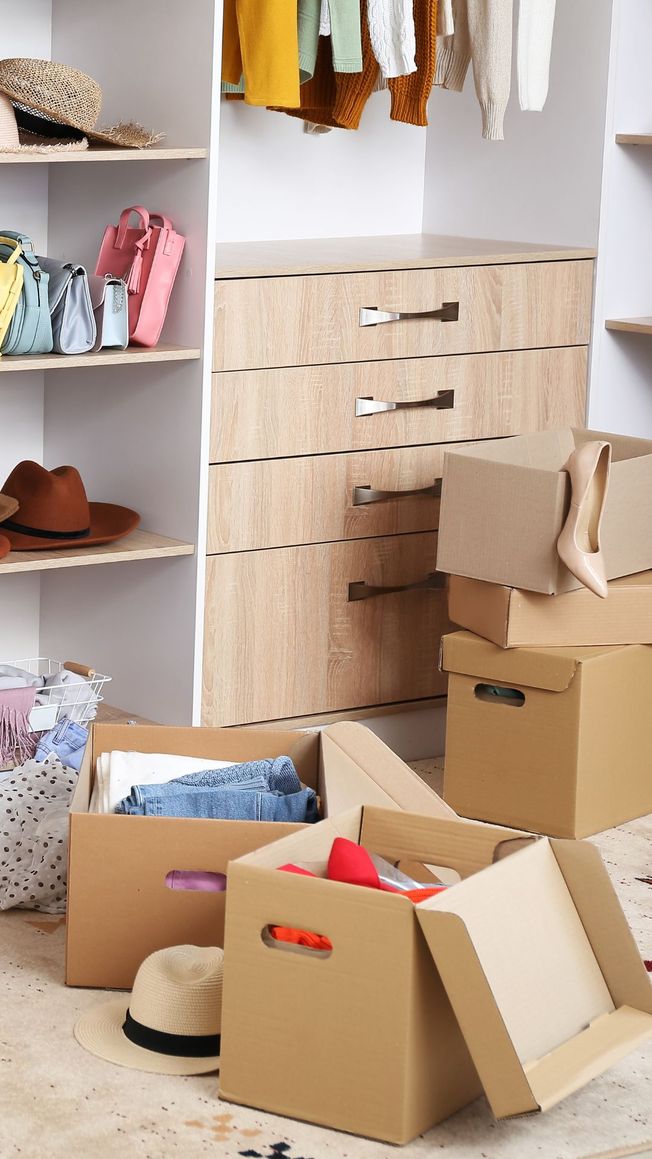What is a capsule wardrobe?
The term "capsule wardrobe" was coined by British fashion icon Susie Faux in the 1970s. A traditional capsule wardrobe consists of a collection of 10 to 50 practical and versatile garments assembled into a complete wardrobe for a season, but the definition is no longer so strict.
The most important feature is that the pieces are interchangeable, so you can create countless outfits from fewer pieces. Season, lifestyle or event-specific capsules have also become popular. While the concept is not new, it represents a modern rethink of the way we wear clothes in the age of fast fashion and inspires a significant change in our consumption habits.
In our hectic lives, many of us reach the point of decision fatigue early in the day. By limiting your wardrobe to carefully selected garments, you save yourself from making multiple decisions every day. When it's so easy to get dressed, there's also much less chance of impulse buying, so you can break unhealthy buying habits too.
Aside from everyday stresses, the fashion industry is one of the biggest polluters in the world, so changing your clothing habits is not only a solution for your lifestyle, but also for our planet. Thinking about how our fashion purchases can improve our daily lives puts the emphasis on quality over quantity, which means we produce less waste and save money in the long run.
And the benefits are proven. A recent study on Capsule Wardrobes by the International Journal of Market Research found promising results: "A three-week Capsule Wardrobe had a positive effect on participants, who felt less stressed and independent of fashion trends, found joy in their fashion style and strengthened their conviction for conscious consumption." Cool, right?
Putting together a wardrobe is all about making a logical choice of clothes that you not only enjoy wearing, but that are practical and versatile.
INVENTORY
To start the process, you need to get all the clothes out of your wardrobe and take stock of them. Some questions you could ask about each item of clothing are:
Have I worn it in the last year?
Does it fit my daily lifestyle?
Does it fit my current body?
Does it go with my other clothes?
Do I love it?
These questions will help you decide what can stay and what needs to go. It is likely that most clothes will fall into one of the following four categories: repair, give away/sell, recycle or keep.


MAKE A LIST
Next, make a list of the contents of your Capsule Wardrobe.
The contents of your Capsule wardrobe will depend on the season and your individual style. However, it is important to have a balanced ratio of tops, bottoms, layers, accessories and shoes. Neutral colours that combine well are the key. But of course gaudy prints and colours also have their place in a particular capsule style. In general, it's easier to choose the most important pieces in neutral tones and add a few accents to make it easier to combine.
FIND AND FILL GAPS
At this stage, you should check your list against what you already own so you can see where there are gaps and decide how best to fill them. Once you have used up everything you own, you should consider buying second-hand or swapping clothes with friends.
Chances are, after all that, you're only missing a few pieces, and maybe you can support some ethical brands to complete your wardrobe.

Some final suggestions:
High-quality basics
The key to building a capsule wardrobe is to invest in high-quality basics: clothes you'll wear every day.
Brands you can trust
Finding ethical brands can be a real challenge. Choose brands carefully and pay particular attention to a transparent supply chain, fair treatment of workers and high quality of clothing.
Affordability
People think sustainable and ethical fashion is too expensive. And it is...But there are good reasons for that. Small production lines are more expensive, and organic fabrics are not so easily available, which in turn costs more.
A surprise!
Every Capsule wardrobe should include a few surprise pieces. Pieces that you really love and that are just a little bit different.
